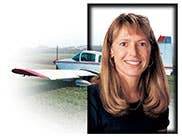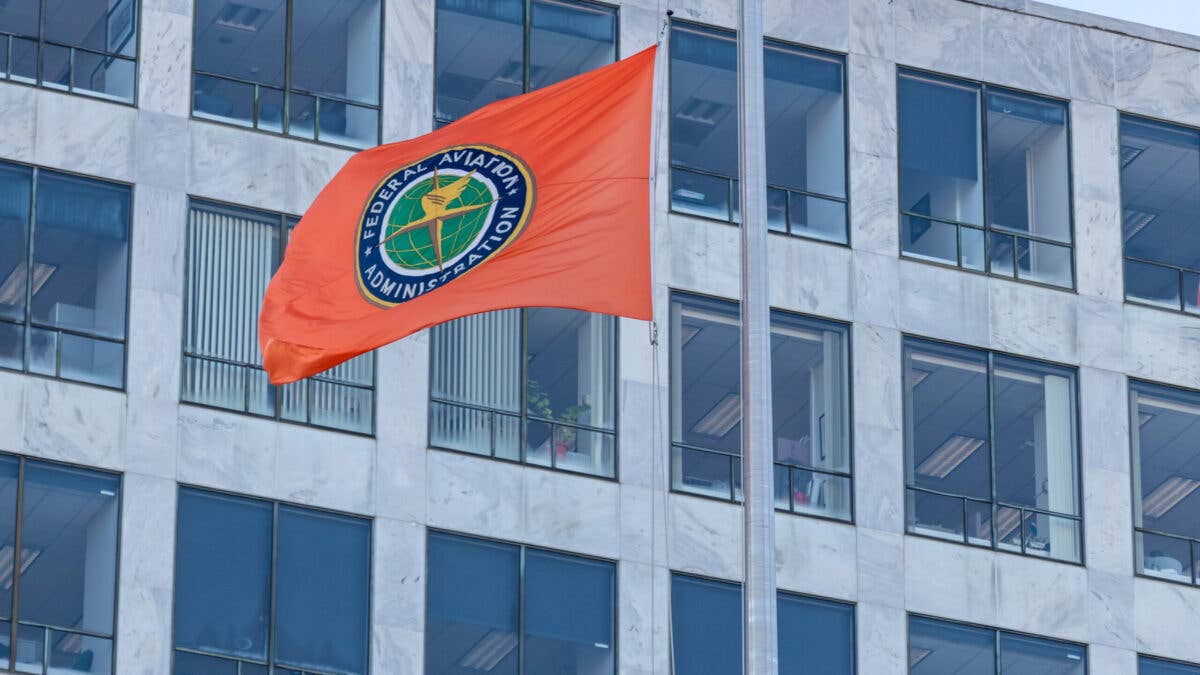
ColumnArt_Web
For all the fuss made about California's huge population, almost two-thirds of its 36.5 million people are squeezed into just 8 percent of the land. That leaves an awful lot of open spaces in between, as anyone who's ever flown -- or driven -- between San Francisco and Los Angeles can attest.
But my friend Jeff, who does demo flights for Cirrus, had a turbo SR22 G3 in Los Angeles he wanted me to try, and I was looking for an excuse to take the Cheetah somewhere. So we started looking for somewhere halfway in between to meet for lunch. "Halfway," mind you, being in terms of time, not distance, since the Cirrus SR22 could run speed circles around my little sky slug.
We wanted someplace with a restaurant on the field. Flying over an hour to eat peanut butter-cracker sandwiches was something I might have done in my student pilot days, but nothing I'd knowingly set myself up for now. But as anyone who's flown around a bit knows, there's a huge range of quality and variety, even among airport restaurants.
In my experience, most airport restaurants fit into the general basic lunch counter/diner category of eateries, but there are a few notable exceptions. There was, for example, the lakefront restaurant across the street from the Iron Mountain, Michigan, airport. I remember its name -- The Blind Duck -- because it was notable not only for its superb planked whitefish, but also for its large ... and I do mean LARGE ... floating mascot, complete with Stevie Wonder shades, bobbing happily just offshore. There was also the airport café at a little airport in southern Georgia where we stopped with my old Cessna 120 one time, which turned out to be a tollbooth-sized barbecue shack on a corner of the airport property.
On the other end of the spectrum, there was the restaurant at Lunken Airport (or "Sunken Lunken," as the locals called it), alongside the Ohio River in Cincinnati, where my old boyfriend Jim took me on our first official date. He rented a Cessna 150, flew down to Louisville, where I was living at the time, picked me up and flew us back to Lunken. The restaurant there was a stunningly beautiful establishment in the old Art Deco terminal building. There were still intricate, WPA-funded mosaics on the walls, and the candlelight ambiance of the restaurant allowed us to enjoy the lights of the airport outside the windows as we dined on halibut and filet mignon. As first dates go, it was pretty impressive.
Of course, I was brand new to aviation at the time, and there was no restaurant at the airport where I'd just learned how to fly. So for a time, I also thought Lunken was representative of what an airport restaurant was. I know. I laugh when I think about it now, too. But in perusing the possible options halfway between San Francisco and Los Angeles, I found myself thinking about the restaurant at Lunken again. Because despite the miles of uninhabited terrain along the route, I'd stumbled on a Lunkenesque bistro one time a few years ago at the seemingly unlikely way station of Paso Robles, at the south end of the Salinas Valley.
Twelve years ago, Matthew Riley, a chef trained at the Culinary Institute of America, moved to Paso Robles because he believed it might become another Napa Valley-type wine region, where creative, high-quality food would find a welcome home. Turns out he was right. At the time, there were 32 wineries in the Paso Robles area. Now there are more than 200.
Until four years ago, Matthew worked as a chef in other people's restaurants. But when the city built a new terminal at the airport and put a contract for the restaurant and bar out for bid, Matthew proposed a resturant that would be right at home in the heart of Napa.
"At the time, people said most airport cafes are dives," he says, by way of explaining why few people thought he had a chance at the contract. "But I came here for the wine country, so I had a different approach." And, in the end, his bid was the one the city accepted.
Matthew's at the Airport is a small establishment, but his friends were right. Few airport cafes have intricate cabernet-colored tapestry booths, hammered copper placeholder plates, and menu offerings ranging from Lobster Flan and Noisette of Colorado Spring Lamb to a mushroom tart consisting of "sautéed wild mushroom with garlic, shallots and brandy, reduced with a glaze de viande, finished with cream and presented in a puff pastry shell with melted fresh mozzarella."
In a nod to his aviation patrons, Matthew also offers the best version of the "Hundred Dollar Hamburger" I've ever seen. (For anyone not familiar, pilots often joke about the cost of flying to lunch somewhere. The cheap hamburger at the destination ends up costing $100, once the price of fuel and other expenses are factored in.) But at Matthew's, you really can order a $100 hamburger. It comes with two beef patties, a selection of four cheeses, avocado, sautéed mushrooms, grilled onions, bacon ... and a bottle of Moet & Chandon champagne.
Since we still had flying to do, Jeff and I had to forego the champagne. But even without the bubbly, the hamburger was pretty tasty. Matthew came out and joined us partway through the meal, and I ended up learning some interesting -- and disturbing -- facts about airport cafes. First was that there's actually a website called 100dollarhamburger.com that gives reviews of various airport cafes. Who knew?
But Matthew also said his clientele has changed dramatically in the past 10-12 months. Economists don't typically look at airport cafes as the mining canaries of the national economy, but perhaps they should. Why? Because about 12 months ago, the number of pilots flying in to Matthew's started dropping precipitously. Then, about 10 months ago, the real estate folk disappeared from his clientele, as well. He didn't have to read the Wall Street Journal to know the economy was taking more than just a little blip hit.
In point of fact, airport cafés are hurting all across the country. Matthew reported that in the first 11 months of 2007, 17 new airport restaurants opened nationwide. In that same period of time, 143 closed their doors. "I think it's just the gas prices," Matthew said. "That $100 hamburger is now $150 or $200."
I can't argue him there. I still remember being incensed, just eight years ago, when the FBO at the Palm Springs, California, airport charged me the outrageous sum of $3 a gallon for fuel. When I filled up after lunch at Paso Robles this time, the price was $5.60. My old five-gallons-an-hour Cessna 120 is looking pretty nostalgically wonderful, these days.
On the other hand, aviation was never really cheap. As Stu Horne of Aviat Aircraft pointed out to me a couple of years ago, there was a reason all those barnstormers flew tired old Army-surplus Jenny biplanes. It was all most pilots could afford, even though the country was in the throes of the Roaring '20s. And most barnstormers were hard-pressed to keep even those rattletraps in the air -- hence the need to hop rides.
There have always been a lucky few who could buy the beautiful new airplanes crafted by the designers at Beech, Travel Air, Stearman, Stinson and Cessna. But the vast majority of pilots have always had to scrape by and salvage their time in the air in used, borrowed, rented or homebuilt machines. The famous Lockheed test pilot Tony LeVier once told me that in the cash-strapped 1930s, he finally figured out how to give flying lessons by the minute in order to eke out a living as a flight instructor. I can't remember the exact pricing, but the idea was that he'd give a student one circuit around the patch while hammering home as many skill sets as he could cram into that compact window of time.
So maybe we, too, will end up getting astoundingly creative in terms of how we pay for our flying, in the days to come. "Necessity is ... " and all that. And come to think of it, maybe the romantic world of the barnstormers has more relevance today than we might think. After all, the barnstormers didn't hop rides to expose more people to the world of flying. They gave people rides because it was the only way they could afford the gas. So maybe we should revive that barnstormer tradition. Instead of flying solo to all those $100 hamburger joints, we could put up flyers at work offering to take other people. Or plane-pool with other pilots at our home airports.
If everyone shared the expenses, it would more than mitigate the increase in gas costs. And ... who knows? We could end up making new friends and winning new converts to aviation in the bargain. After all, if the point of the $100 hamburger is to have an excuse to go flying, explore someplace new and interesting, and have some good company, conversation and laughter along the way ... well, then, the more, the merrier.
But perhaps even more importantly, it would help keep all those $100 hamburger destinations alive and well. Because if we don't find a way to keep patronizing them, they will continue to shut their doors. And while the Earth would certainly keep turning if every last airport cafe in America went out of business, something precious would disappear from the world.
For airport cafés are to pilots what Paris bistros are to artists and philosophers. They are the places we go to find our community; to enjoy conversation, laughter, and a comforting sense of understanding with others who share our aspirations, frustrations, adventures and dreams. And whether those cafes serve deliciously greasy hamburgers or a delectable noisette of lamb -- they all share one particular feature that makes them stand out from every other restaurant in America. Because for all the amazing food and service available at epicurean legends like The French Laundry, The Four Seasons or the Gramercy Tavern ... you know, when you think about it ... not a single one of them of them allows you to taxi to your table.

Sign-up for newsletters & special offers!
Get the latest FLYING stories & special offers delivered directly to your inbox






